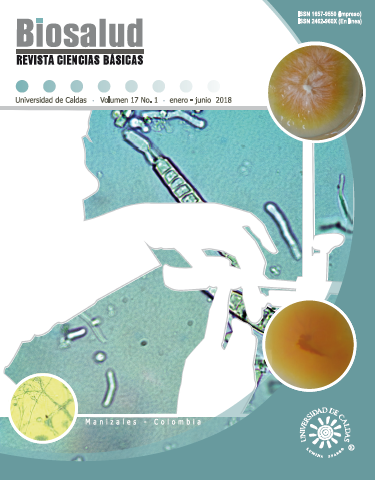Authors
Abstract
The materials that are in contact with the body system require the fundamental characteristic that allows their acceptance and integration in the organism, the biocompatibility. Likewise, they must show excellent mechanical, tribological and morphological properties, so that their provision of a service in the specific tissue is the most optimal, being able to sketch such characteristics through the characterization of these materials by spectroscopic and microscopic techniques. In this work, an artificial valve for the heart made of titanium and coated with diamond-like carbon (DLC), highly biocompatible material, was subjected to XPS, FTIR, and morphological analysis. A high interdiffusion of the coating and the substrate was found, together with a large signal of sp3 bonds. The CH3 terminal bonds represent a little compact film. The film roughness of the coating was low and adequate for hemocompatible purposes.
Keywords
References
2. De Mel A, Rafiei Y, Cousins BG, Seifalian AM. Modifying biomaterial surfaces to optimise interactions with blood. En: Williams R, editor. Surface Modification of Biomaterials. Methods Analysis and Applications. 1st Edition. Cambridge, UK: WoodHead; 2011. p. 255-283.
3. Mahapatro A. Bio-functional nano-coatings on metallic biomaterials. Mater. Sci. Eng. C. 2015;55:227-251.
4. Kwok SCH, Ha PCT, McKenzie DR, Bilek MMM, Chu PK. Biocompatibility of calcium and phosphorus doped diamond-like carbon thin films synthesized by plasma immersion ion implantation and deposition. Diam. Relat. Mater. 2006;15:893-897.
5. Butt MZ, Khaleeq-ur-Rahman M, Ali D, Akmal A, Naseem S. Deposition and characterization of multilayer DLC:Mo thin films grown on silicon substrate by off-axis pulsed laser deposition technique. Appl. Surf. Sci. 2015;331:407-414.
6. Bociaga D, Sobczyk-Guzenda A, Szymanski W, Jedrzejczak A, Jastrzebska A, Olejnik A, et al. Mechanical properties, chemical analysis and evaluation of antimicrobial response of Si-DLC coatings fabricated on AISI 316 LVM substrate by a multi-target DC-RF magnetron sputtering method for potential biomedical applications. Appl. Surf. Sci. 2017;417:23-33.
7. Dey RM, Patil D, Kulkarni S. Integrated characterization study of diamond like carbon (DLC) synthesized by 2.45GHZ microwave electron cyclotron resonance (ECR) plasma CVD. Surf. Coat. Technol. 2017;328:30-43.
8. Sharma R, Pandey AK, Sharma N, Sasmal D, Barhai PK. Diamond like carbon films as a protective surface on PMMA for biomedical applications. Surf. Coat. Technol. 2010;205:2495-2502.
9. Tang XS, Wang HJ, Feng L, Shao LX, Zou CW. Mo doped DLC nanocomposite coatings with improved mechanical and blood compatibility properties. Appl. Surf. Sci. 2014;311:758-762.
10. Chen T-S, Shiue S-T. Hydrogenated amorphous carbon films used for carbon-sealed double-coated optical fibers. Thin Solid Films. 2012;520:6765-6773.
11. Antonov VE, Bashkin IO, Bazhenov AV, Bulychev BM, Fedotov VK, Fursova TN, et al. Multilayer graphane synthesized under high hydrogen pressure. Carbon. 2016;100:465-473.
12. Couderc P, Catherine Y. Structure and physical properties of plasma-grown amorphous hydrogenated carbon films. Thin Solid Films. 1987;146:93-117.
13. Toyoda T, Sutou Y, Komiyama S, Ando D, Koike J, Wang M. Mater. Trans. 2016;57:362-367.
14. Itoh H, Sasai R, Kamiya M, Lee S, Kuroda K, Tsutsumoto T. Adhesion improvement of diamond films to silicon nitride substrate for cutting tool. En: Mittal KL, Zeist AH, editores. Adhesion aspect of thin films. Vol. 1. The Netherlands: Ridderprint bv, Ridderkerk; 2001. p. 141-158.
15. Wang J, Ma J, Huang W, Wan L, He H, Liu C. The investigation of the structures and tribological properties of F-DLC coatings deposited on Ti-6Al-4V alloys. Surf. Coat. Technol. 2017;316:22-29.
16. Zhang D, Shen B, Sun F. Study on tribological behavior and cutting performance of CVD diamond and DLC films on Co-cemented tungsten carbide substrates. Appl. Surf. Sci. 2010;256:2479-2489.
17. Liu JX, Yang DZ, Shi F, Cai YJ. Sol–gel deposited TiO2 film on NiTi surgical alloy for biocompatibility improvement. Thin Solid Films. 2003;429:225-230.

 PDF (Español)
PDF (Español)
 FLIP
FLIP


















